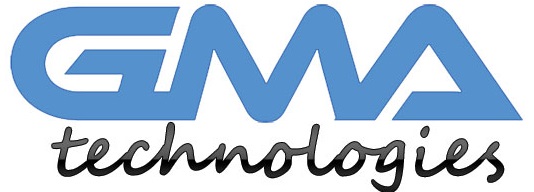SEO (Search Engine Optimization) is the practice of optimizing a website in order to improve its visibility and ranking on search engines like Google, Bing, and Yahoo. It involves various techniques and strategies that aim to make a website more search-engine friendly and increase its chances of appearing on the first page of search results for relevant keywords. But have you ever wondered how different types of websites impact your SEO strategy? This brings us to two fundamental categories: static and dynamic websites. Each has its unique features that can influence not only user experience but also search engine rankings. Understanding these differences is vital for anyone looking to boost their site’s visibility and drive organic traffic.
Let’s dive into the world of static vs dynamic websites, explore their pros and cons, and uncover what it means for your SEO efforts.
Definition of Static and Dynamic Websites
Static websites are the simplest form of web pages. They consist of fixed content that doesn’t change unless manually updated. Each user sees the same information when they visit, making them ideal for showcasing portfolios or business information.
On the other hand, dynamic websites offer a more interactive experience. Their content can change based on user interactions or data input. These sites often pull information from databases to deliver personalized experiences, making them suitable for e-commerce platforms and social media.
Both types serve distinct purposes in digital presence but differ significantly in functionality and user engagement levels. Understanding these differences is crucial for anyone considering building a website today.
Pros and Cons of Static Websites
Static websites offer several advantages. First, they are incredibly fast. Since the content is fixed and doesn’t require server-side processing, users experience quicker load times. This boost in speed can lead to better user engagement.
Another benefit is simplicity in hosting. Static sites are lightweight and don’t need complex databases or servers, making them easier and cheaper to host.
However, there are drawbacks to consider. Updating a static website can be cumbersome, as changes often require manual edits of code files. For businesses that frequently change their content, this might not be ideal.
Scalability poses another challenge. As your site grows or if you want interactive features like forms or comments, static sites may fall short without significant adjustments or additional tools in place.
Pros and Cons of Dynamic Websites
Dynamic websites offer flexibility. They can present different content to users based on interactions, preferences, or past behavior. This personalization enhances user engagement and encourages return visits.
However, with that complexity comes challenges. Dynamic sites often require more resources for development and maintenance. If not properly managed, they might face performance issues like slow loading times.
Search engines love fresh content. Dynamic websites can update automatically through databases or user-generated input, keeping your site relevant in the eyes of search algorithms.
Yet this constant change may confuse crawlers if not structured correctly. Proper SEO practices are essential to ensure these sites rank well.
Security is another consideration; dynamic sites are more prone to vulnerabilities due to their interactivity and reliance on databases compared to static alternatives. Balancing these factors is crucial for a successful online presence.
How search engines rank static and dynamic websites differently
Search engines have distinct ways of evaluating static and dynamic websites. Static sites are simpler, often delivering the same content to every user. This consistency can make them easier for search engines to crawl and index.
Dynamic websites, on the other hand, generate content on-the-fly based on user interactions or database queries. While this offers a more personalized experience, it can pose challenges for search engine crawlers. If not optimized properly, important pages might get overlooked.
Page load speed is another factor in how rankings differ. Static sites usually load faster due to their straightforward structure. Dynamic sites may lag if they rely heavily on databases or scripts.
Both types require strategic planning to ensure visibility in search results but come with unique considerations that impact their SEO performance differently.
Factors to consider when choosing between a static or dynamic website for SEO purposes
Choosing between static and dynamic websites for SEO involves several key factors.
First, consider your content update frequency. If you plan to frequently change or add content, a dynamic website is more suitable since it allows for easier updates.
Next, think about the scale of your website. Static sites work well for smaller projects with limited pages. However, as complexity increases, a dynamic site may offer better scalability.
Loading speed is another crucial element. Static sites generally load faster due to their simplicity, which can improve user experience and search rankings.
User interaction also plays a role. If your site requires forms or user accounts, opt for a dynamic approach that supports these features seamlessly.
Assess your budget and technical skills. Static websites are often simpler to create but may lack advanced functionalities found in dynamic ones that require ongoing maintenance and enhancements.
Tips for optimizing both types of websites for better search engine rankings
Optimizing static websites starts with clean, semantic HTML. Use relevant keywords in your title tags and headings to improve visibility.
Don’t forget about image optimization. Compressed images enhance loading speed and keep users engaged. Alt text is essential too; it helps search engines understand your visuals.
For dynamic sites, focus on structured data. This enables search engines to comprehend content better, potentially leading to rich snippets in SERPs.
Regularly updating content keeps both types fresh and relevant. Freshness signals quality to search engines.
Utilize a responsive design for mobile friendliness. A seamless experience across devices can lead to increased traffic and lower bounce rates.
Monitor performance using tools like Google Analytics or Search Console. Analyzing user behavior provides insights into what works best for your audience and where improvements are needed.
Conclusion:
When it comes to choosing between static and dynamic websites, understanding their differences is key for effective SEO strategies. Static websites offer simplicity and speed but can fall short in terms of scalability and content updates. Conversely, dynamic websites provide flexibility and interactivity, though they may require more resources to maintain.
Search engines evaluate these two types differently based on factors like loading time, user engagement, and content freshness. Therefore, the decision hinges on your specific needs—whether you prioritize performance or adaptability.
Optimizing both types involves implementing best practices such as keyword placement, mobile responsiveness, and quality backlinks. By focusing on these areas regardless of which website type you choose, you can enhance visibility in search engine results.
Choosing the right platform impacts not just how users experience your site but also how effectively it performs in search rankings. Whether you’re leaning toward a static or dynamic approach ultimately depends on your business goals and audience requirements.

